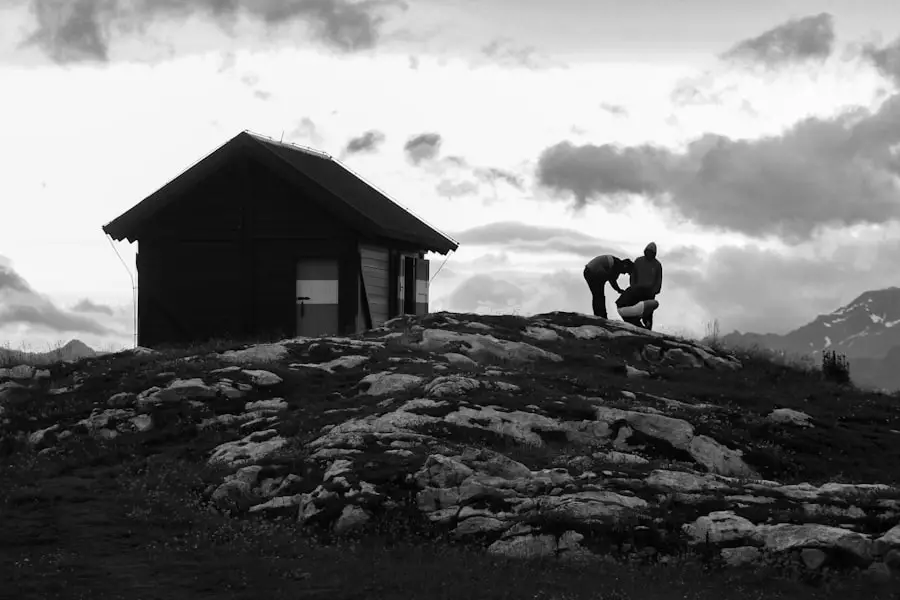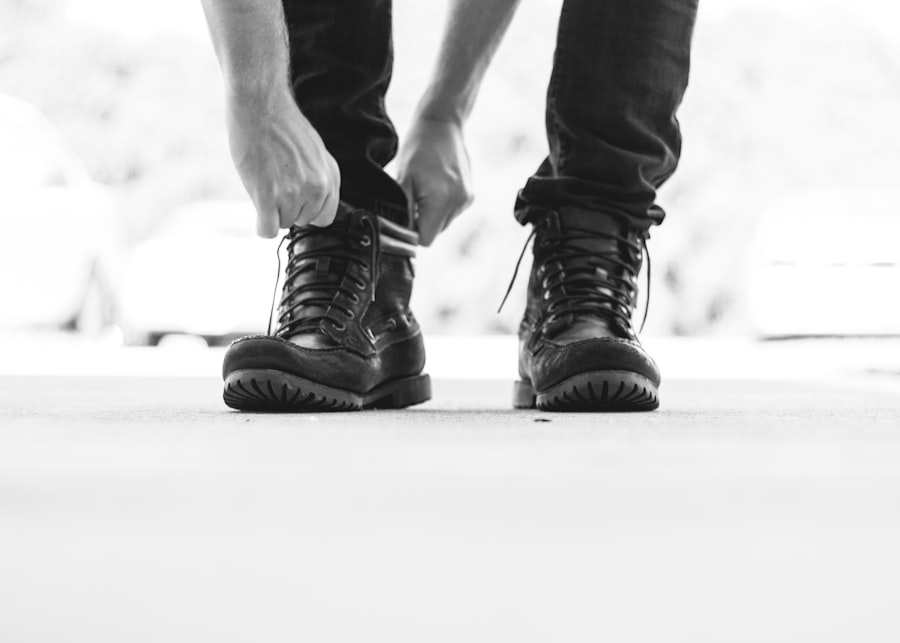The ongoing debate between practicality and aesthetics in hiking boot design is a complex one, often leading to polarized opinions among outdoor enthusiasts and fashion aficionados alike. On one hand, the primary function of hiking boots is to provide support, traction, and protection during outdoor activities. This utilitarian perspective emphasizes features such as waterproof materials, rugged soles, and ankle support, which are essential for navigating challenging terrains.
However, as outdoor activities become increasingly popular among urban dwellers and fashion-conscious individuals, the demand for boots that are not only functional but also visually appealing has surged. This has led to a growing tension between the need for performance-driven designs and the desire for stylish footwear that can transition seamlessly from the trail to social settings. The challenge lies in striking a balance between these two often conflicting priorities.
While some brands have made strides in creating hiking boots that incorporate trendy elements—such as vibrant colors, sleek silhouettes, and innovative materials—many still fall short of achieving a harmonious blend of form and function. For instance, a boot that excels in technical performance may sacrifice aesthetic appeal, while a stylish option may lack the durability and support required for serious hiking. This dichotomy raises questions about the future of hiking boot design: can manufacturers create footwear that satisfies both the practical needs of outdoor adventurers and the aesthetic desires of fashion-forward consumers?
Key Takeaways
- Practicality often clashes with aesthetics in the design of hiking boots, creating a debate between functionality and style.
- Bulky designs and heavy materials are common in hiking boots, prioritizing durability and support over lightweight and sleek designs.
- The lack of fashionable options in hiking boots makes it challenging for consumers to find a balance between style and functionality.
- Unflattering color choices in hiking boots can limit the appeal of the footwear, especially for fashion-conscious consumers.
- The influence of functionality on design is evident in the prioritization of features like traction, waterproofing, and ankle support in hiking boots.
One of the most significant criticisms of traditional hiking boots is their bulky designs and heavy materials. Many models are constructed with thick leather or heavy synthetic fabrics that can weigh down the wearer, making long hikes feel more strenuous than necessary. This bulkiness often translates into a clunky appearance, which can deter individuals who prioritize style in their footwear choices.
The perception that hiking boots are cumbersome can lead to a reluctance to wear them outside of their intended environment, further perpetuating the divide between outdoor gear and everyday fashion. Moreover, the weight of these boots can impact performance on the trail. Hikers often seek lightweight options that allow for greater agility and comfort during extended periods of activity.
As a result, some manufacturers have begun experimenting with lighter materials and streamlined designs to cater to this demand. However, this shift towards lighter options can sometimes compromise essential features such as ankle support and durability, leading to a trade-off that may not satisfy all users. The challenge remains: how can designers create hiking boots that are both lightweight and robust enough to withstand the rigors of outdoor adventures?
Lack of Fashionable Options
The hiking boot market has long been criticized for its limited selection of fashionable options. While there are numerous models designed for performance, many lack the contemporary styling that appeals to modern consumers. This absence of fashionable choices can be particularly disheartening for those who wish to express their personal style while engaging in outdoor activities.
As outdoor pursuits gain popularity among younger generations, the demand for stylish yet functional footwear has never been higher. Some brands have recognized this gap in the market and have begun to introduce more fashion-forward designs. For example, collaborations between outdoor brands and high-fashion designers have resulted in limited-edition hiking boots that feature unique patterns, colors, and materials.
These collaborations not only elevate the aesthetic appeal of hiking boots but also challenge the notion that outdoor gear must be purely utilitarian. However, despite these advancements, many consumers still find themselves faced with a lack of options that seamlessly blend style with functionality, leaving them to choose between looking good and performing well on the trail.
Unflattering Color Choices

Color plays a crucial role in the overall appeal of hiking boots, yet many traditional models are often available in unflattering or muted tones. Earthy colors like browns, greens, and grays dominate the market, which can make it difficult for consumers seeking more vibrant or trendy options. This limited color palette not only affects the visual appeal of hiking boots but also reinforces the stereotype that outdoor gear is inherently dull or unattractive. In recent years, some brands have begun to experiment with bolder color choices and patterns, recognizing that consumers want footwear that reflects their personality and style preferences. Bright hues, unique prints, and even metallic finishes have started to emerge in hiking boot collections, catering to a more fashion-conscious audience.
However, these colorful options are still relatively scarce compared to traditional designs, leaving many consumers feeling frustrated by their limited choices. The challenge remains for manufacturers to expand their color offerings while ensuring that these vibrant designs do not compromise the performance characteristics that hikers rely on.
The Influence of Functionality on Design
| Functionality Aspect | Design Impact |
|---|---|
| User Experience | Enhances usability and satisfaction |
| Accessibility | Ensures inclusivity and reach |
| Performance | Affects speed and efficiency |
| Scalability | Allows for growth and adaptability |
| Reliability | Builds trust and dependability |
Functionality is undoubtedly a driving force behind hiking boot design, influencing everything from material selection to structural features. The need for waterproofing, breathability, traction, and support shapes how manufacturers approach their designs. For instance, many hiking boots incorporate advanced technologies such as Gore-Tex linings for waterproofing or Vibram soles for superior grip on various surfaces.
These functional elements are essential for ensuring safety and comfort during outdoor activities. However, an overemphasis on functionality can sometimes lead to designs that prioritize performance at the expense of aesthetics. Hikers may find themselves wearing boots that are highly effective on the trail but lack visual appeal or modern styling.
This creates a dilemma for manufacturers: how can they innovate in terms of functionality while also appealing to consumers’ aesthetic sensibilities? The answer may lie in adopting a more holistic approach to design—one that considers both performance metrics and visual elements from the outset.
The Challenge of Finding the Right Fit
Finding the right fit is a critical aspect of selecting hiking boots, yet it remains a significant challenge for many consumers. The fit of a boot can greatly influence comfort levels during hikes; poorly fitting footwear can lead to blisters, discomfort, and even injuries. Unfortunately, sizing standards can vary widely between brands and models, making it difficult for consumers to determine which boots will provide the best fit without trying them on first.
Additionally, many traditional hiking boots are designed with specific foot shapes in mind—often catering to wider or narrower feet without offering enough options for those with unique sizing needs. This lack of inclusivity can alienate potential customers who may feel overlooked by manufacturers focused primarily on performance metrics rather than accommodating diverse foot shapes. As outdoor activities continue to attract a broader audience, it becomes increasingly important for brands to prioritize fit by offering a wider range of sizes and customizable options.
Limited Versatility in Styling

Another significant drawback of traditional hiking boots is their limited versatility in styling. Many models are designed specifically for rugged outdoor use, making them less suitable for casual wear or urban environments. This lack of versatility can discourage individuals from investing in high-quality hiking boots if they feel they will only be able to wear them in specific contexts.
In contrast, modern consumers often seek footwear that can transition seamlessly between different settings—whether it be a weekend hike or a casual outing with friends. Some brands have begun to address this need by creating hybrid designs that blend elements of hiking boots with casual sneakers or lifestyle shoes. These versatile options not only enhance the overall appeal of hiking footwear but also encourage more people to embrace outdoor activities without sacrificing style.
The Perception of Hiking Boots as “Outdoor Gear”
The perception of hiking boots as strictly “outdoor gear” contributes significantly to their limited appeal among fashion-conscious consumers. Many individuals associate hiking boots with rugged landscapes and strenuous activities rather than viewing them as versatile footwear suitable for various occasions. This perception can deter potential buyers who may be interested in outdoor pursuits but feel that traditional hiking boots do not align with their personal style or lifestyle.
To combat this perception, brands must work to redefine what hiking boots represent in contemporary culture. By showcasing innovative designs that blur the lines between outdoor gear and everyday fashion, manufacturers can help shift consumer attitudes toward these products. Marketing campaigns that highlight the versatility of hiking boots—demonstrating how they can be worn in urban settings or paired with fashionable outfits—can play a crucial role in changing perceptions and expanding their market reach.
The Impact of Tradition on Hiking Boot Design
Tradition plays a significant role in shaping hiking boot design, with many brands adhering to long-established conventions regarding materials and construction methods. While these traditions often stem from proven performance characteristics—such as leather’s durability or Goodyear welting’s strength—they can also stifle innovation and limit opportunities for modernizing designs. As consumer preferences evolve toward more contemporary aesthetics and sustainable practices, there is an increasing need for brands to reassess their adherence to tradition.
Embracing new materials such as recycled synthetics or exploring innovative manufacturing techniques could lead to more environmentally friendly options without sacrificing performance. By breaking away from traditional molds while still honoring the core principles of functionality and durability, manufacturers can create hiking boots that resonate with today’s consumers.
The Disconnect Between Outdoor and Fashion Industries
The disconnect between the outdoor and fashion industries has long hindered progress in creating stylish yet functional hiking boots. While outdoor brands focus primarily on performance-driven designs tailored for specific activities, fashion brands often prioritize aesthetics without considering the technical requirements necessary for outdoor use. This divide has resulted in a lack of collaboration between these two sectors, limiting opportunities for innovation and cross-pollination.
To bridge this gap, both industries must recognize the value of collaboration in creating products that meet consumer demands for both style and functionality. Partnerships between outdoor brands and fashion designers could yield exciting new products that challenge conventional notions of what hiking boots should look like while maintaining essential performance features. By fostering dialogue between these two worlds, manufacturers can create footwear that appeals to a broader audience while encouraging more people to engage with outdoor activities.
The Potential for Innovation in Hiking Boot Design
Despite the challenges facing hiking boot design today, there is immense potential for innovation within this space. Advances in technology—such as 3D printing or smart textiles—could revolutionize how hiking boots are constructed and customized for individual users’ needs. Additionally, incorporating sustainable practices into production processes could attract environmentally conscious consumers who prioritize eco-friendly products.
Furthermore, exploring new design philosophies that prioritize both aesthetics and functionality could lead to groundbreaking products that redefine what hiking boots represent in contemporary culture. By embracing creativity and experimentation while remaining committed to performance standards, manufacturers have an opportunity to reshape the future of hiking footwear—creating options that resonate with both outdoor enthusiasts and fashion-forward individuals alike. In conclusion, while there are numerous challenges facing the hiking boot industry today—from balancing practicality with aesthetics to addressing issues related to fit and versatility—there is also significant potential for innovation and growth.
By embracing new materials, technologies, and design philosophies while fostering collaboration between outdoor and fashion sectors, manufacturers can create products that meet the evolving needs of consumers seeking stylish yet functional footwear for their adventures both on and off the trail.
If you’re wondering why hiking boots are so ugly, you may also be interested in reading about the best travel gifts for women. This article offers a variety of gift ideas that are both practical and stylish for female travelers. From scarves with hidden pockets for travel to softside carry-on luggage with wheels, there are plenty of options to choose from that combine functionality with fashion. So while hiking boots may not be the most attractive footwear, there are plenty of other travel accessories that can help you stay stylish on the go.
FAQs
Why are hiking boots so ugly?
Hiking boots are designed for functionality and durability rather than aesthetics. Their appearance is often a result of the materials and construction methods used to make them suitable for outdoor activities.
What factors contribute to the “ugly” appearance of hiking boots?
Hiking boots are designed to provide support, protection, and traction for outdoor activities. This often results in a bulky and rugged appearance, with features such as reinforced toe caps, thick soles, and heavy-duty lacing systems.
Do hiking boots prioritize function over fashion?
Yes, hiking boots are primarily designed to provide comfort, support, and protection for hikers and outdoor enthusiasts. While some brands may offer more stylish options, the primary focus is on performance and durability.
Are there any benefits to the “ugly” appearance of hiking boots?
The rugged appearance of hiking boots often reflects their durability and ability to withstand rough terrain and harsh weather conditions. The design features that contribute to their appearance also provide necessary support and protection for the wearer.
Can hiking boots be both functional and stylish?
Some brands have started to incorporate more stylish elements into their hiking boot designs, offering options that balance both functionality and aesthetics. However, the primary focus remains on providing the necessary support and protection for outdoor activities.
